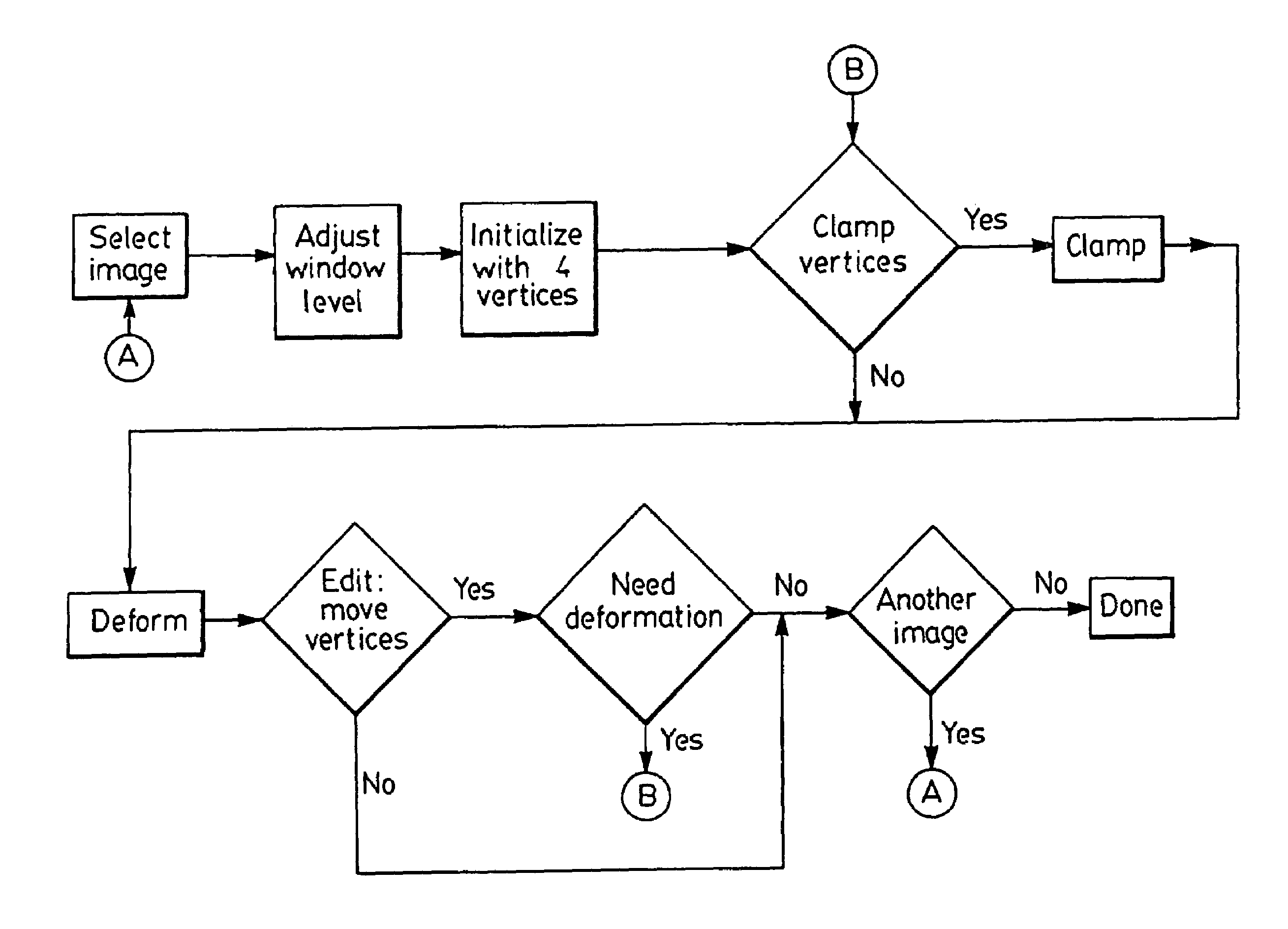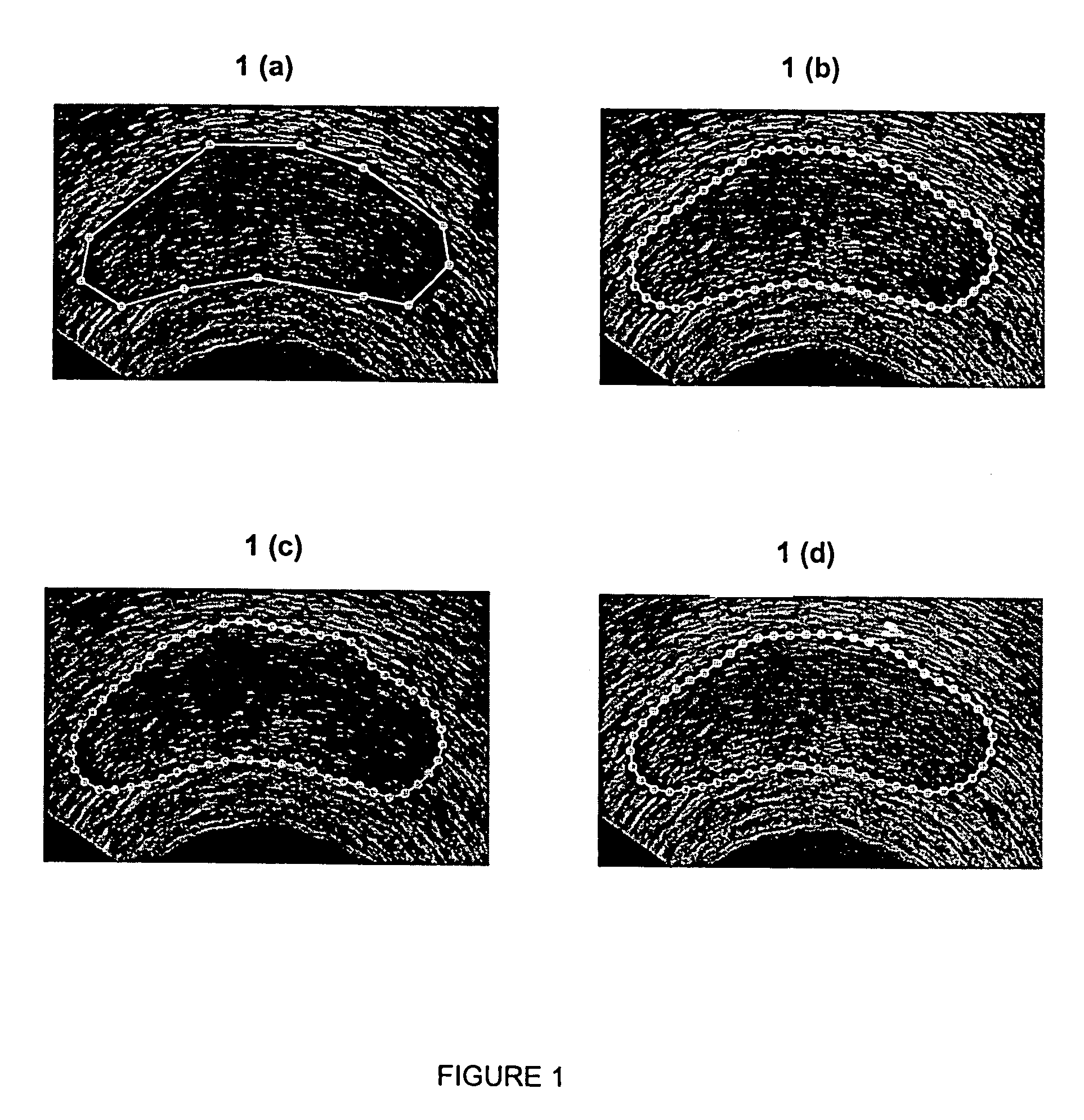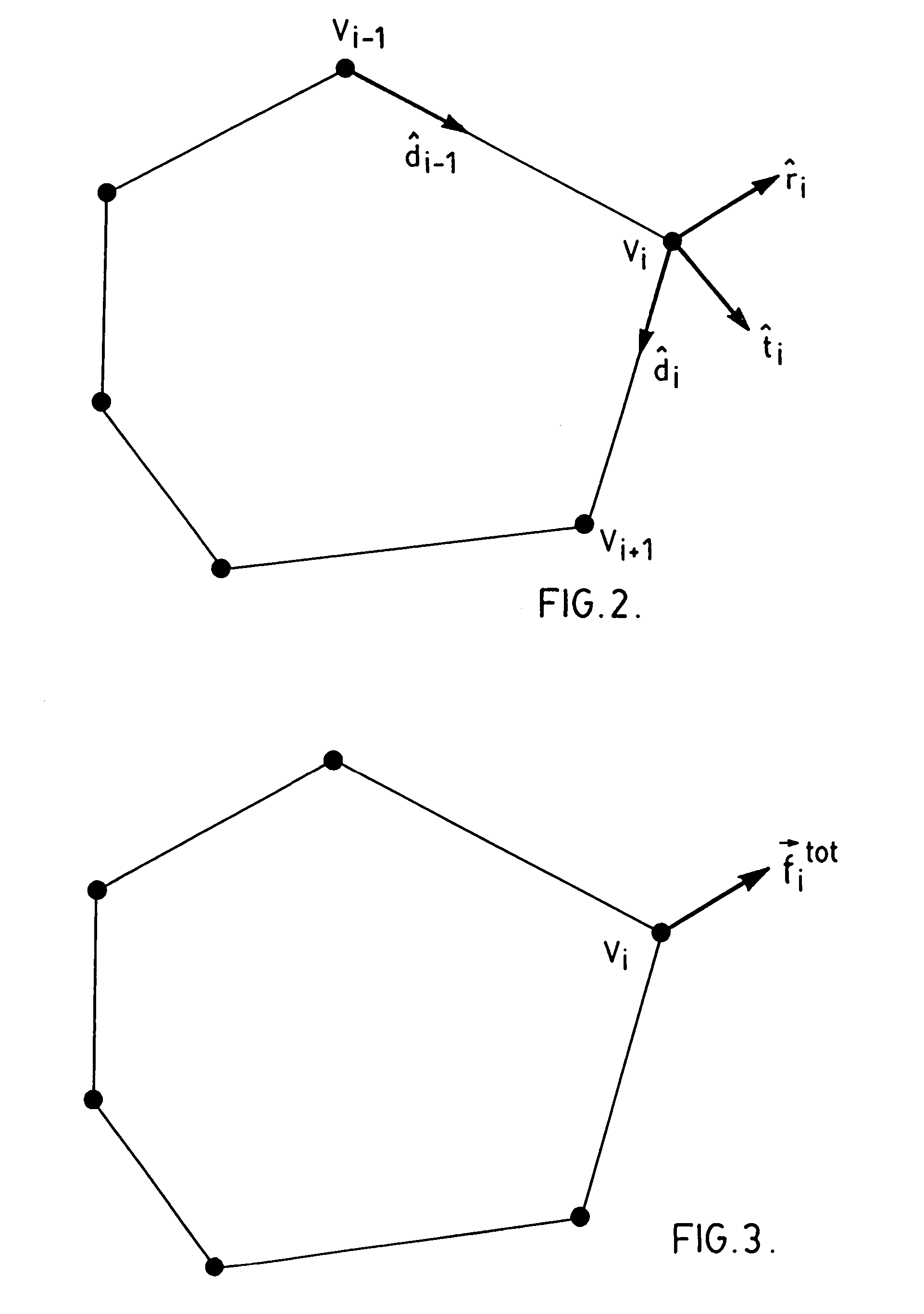Prostate boundary segmentation from 2D and 3D ultrasound images
a prostate and ultrasound image technology, applied in the field of medical imaging systems, can solve the problems of increasing the risk of metastasis, difficult segmentation of ultrasound images of the prostate, and insufficient in-segment local image processing operators like edge detectors for finding the boundary
- Summary
- Abstract
- Description
- Claims
- Application Information
AI Technical Summary
Benefits of technology
Problems solved by technology
Method used
Image
Examples
Embodiment Construction
[0029]As discussed above, DDC is a poly-line (i.e., a sequence of points connected by straight-line segments) used to deform a contour to fit features in an image. When using the DDC to segment an object from an image as originally described by Lobregt and Viergever in “A discrete dynamic contour model”, IEEE Trans. Med. Imag. 1995; 14:12–24, the user must first draw an approximate outline of the object. An example outline is shown in FIG. 1(a) for a typical 2D US (ultrasound) image of the prostate. The DDC is initialized to this outline and is automatically deformed to fit features of interest, which in this case consist of edges that define the boundary of the prostate. FIGS. 1(b) and 1(c) show two stages in the deformation of the DDC. Note that points are automatically added to or deleted from the DDC as it deforms to allow it to better conform to the boundary. FIG. 1(d) shows the final deformed DDC. In this example, the final shape conforms well to the prostate boundary except i...
PUM
 Login to View More
Login to View More Abstract
Description
Claims
Application Information
 Login to View More
Login to View More - R&D
- Intellectual Property
- Life Sciences
- Materials
- Tech Scout
- Unparalleled Data Quality
- Higher Quality Content
- 60% Fewer Hallucinations
Browse by: Latest US Patents, China's latest patents, Technical Efficacy Thesaurus, Application Domain, Technology Topic, Popular Technical Reports.
© 2025 PatSnap. All rights reserved.Legal|Privacy policy|Modern Slavery Act Transparency Statement|Sitemap|About US| Contact US: help@patsnap.com



